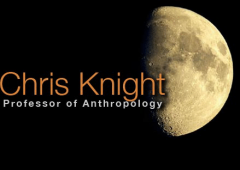Ourselves alone?
Is there anyone out there? Our science correspondent Dr. Chris Knight refuses to go extraterrestrial.
HEADLINES across the world during August reported the shattering news: there was once life on Mars! The evidence consisted of strange microscopic ovoid structures in a meteorite discovered in Antarctica. The American journal Science had hardly appeared when President Clinton hailed the scientific discovery as perhaps the greatest in all human history.
Never mind that most experts instantly dismissed the paper’s evidence as preliminary and speculative. Never mind that the story was hardly even new – the journal Nature had published a paper as long ago as 1989 describing organic molecules in a similar meteorite of Martian origin. And never mind that just the month before, Nature had published a paper on the same meteorite saying that the carbonate rock had formed at a temperature that was too high for life to have possibly formed.
America’s National Space Agency (NASA) was still smarting from having had its budget savagely cut by Congress, and the hype served its purpose. Suddenly, everyone from Clinton down was clamouring for NASA to do more planetary exploration.
Believers in the possibility of extraterrestrial intelligence could hardly contain their excitement: if there had once been life on Mars, that meant life could originate more easily than science had previously supposed. There are numberless galaxies out there, each perhaps with numberless planets. Perhaps, after all, we are not alone.
Until recently, however, such enthusiasts had faced a rather severe problem. Outside our own solar system, there seemed to be no evidence that planets of any kind orbited any star. If planets themselves were extremely rare, how much more improbable a living planet! Then in October 1995, astronomers in Geneva announced the detection of a massive planet circling the sun-like star 51 Pegasi. Astronomers in California swiftly confirmed this finding and, just three months later, turned up two more bodies orbiting other, similar, stars. Nobody could actually see these alien worlds: instead, astronomers measured what is termed the Doppler shift, a periodic displacement in the spectrum of a star as seen from the earth, indicating that the star is “wobbling”. The only thing which could cause such a wobble is some kind of planet.
So, what are the chances of life on planets such as these? The newly discovered planets are utterly peculiar by the standards of our own solar system. The one around 51 Pegasi has a huge mass – at least half that of Jupiter – yet orbits extraordinarily close to its sun, at less than one eighth Mercury’s distance from our sun. Its surface has been estimated to be baked to a theoretical temperature of 1,300 degrees Celsius. The “planet” around the star 70 Virginis is even more strange. Based on its great mass and elliptical orbit, many scientists now think it is not a planet at all but a “brown dwarf” – a gaseous object that forms somewhat like a star but lacks enough mass to shine like one. Little chance of finding life there.
There are good reasons why astronomers are finding only massive bodies in fairly short-period orbits: using the Doppler technique, these are the kind that are easiest to discern. Doubtless, planetary systems more like the solar system will eventually be discovered as techniques improve. But even then, the odds against finding any indications of a living planet would be immense.
There is very little theoretical possibility of “life” based on an element other than carbon. No other known element can form the myriad of complex but stable molecules necessary for life as we know it.
Carbon is admittedly abundant in the universe, and so is organic chemistry. Life, though, depends on water, and this will not be present in liquid form except on a planet exactly the right distance from its sun, and of exactly the right mass.
For tides to pull on oceans, there would also have to be a big orbiting moon. Maybe there are such planets, but the improbabilities mount as further factors crucial to life’s success on this planet are taken into account. Even if life of some kind did begin to evolve elsewhere, the odds against the emergence of technological civilisation are truly astronomical.
While signs of rudimentary life would be difficult for astronomers to pick up from earth, it should be quite easy to pick up signals deliberately beamed across the universe by intelligent aliens – if such beings existed. The astronomers have been listening out for little green men now for some decades. They have heard nothing. I believe the explanation is simple: there is no-one out there.
It is of course difficult to live without faith. As belief in political creeds and in established religions collapses, so with increasing desperation people seek to make contact with other-worldly beings who might give new meaning to their lives.
I agree that theoretically aliens may be out there. But even if they did exist in some corner of the universe, there is not the slightest possibility that they could be of any help to us over here. If we are to reclaim our planet from the vast alien forces now threatening all life on earth, the first condition is to recognise that it is up to us. We are on our own.
